Mendel’s Garden
A theory of landscape design proposes that the relationship between humans and the world around them has evolved over time. It begins with the concept of a ‘first nature’—a pristine, primary nature untouched by human intervention. After this comes Cicero’s idea of a ‘second nature’—plants that have been manipulated, commoditized, and rearranged for human sustenance. And after the fields of agriculture comes the garden—a ‘third nature’ concerned with pleasure and aesthetics, meant to sate a newfound spiritual hunger.
With the rise of genetic modification in agriculture, however, we no longer simply arrange and harvest nature—we now change the very thing itself. This project explores the possible existence of a ‘fourth nature,’ one that manifests in endless rearrangements of AGCT nucleobases, and equally endless shipments of GMO seeds and their fruits around the world. What was once a local, physical heirloom is now an infinitely reconfigurable, patentable, intangible idea for export.
The culmination of this project, following the development of the seed set, is a seed complex set in the ruins of a Mughal charbagh, a garden of four quadrants. The programs within the complex occupy and appropriate the overgrown spaces of the former garden, each one a speculation on our future with the seed.
With the rise of genetic modification in agriculture, however, we no longer simply arrange and harvest nature—we now change the very thing itself. This project explores the possible existence of a ‘fourth nature,’ one that manifests in endless rearrangements of AGCT nucleobases, and equally endless shipments of GMO seeds and their fruits around the world. What was once a local, physical heirloom is now an infinitely reconfigurable, patentable, intangible idea for export.
The culmination of this project, following the development of the seed set, is a seed complex set in the ruins of a Mughal charbagh, a garden of four quadrants. The programs within the complex occupy and appropriate the overgrown spaces of the former garden, each one a speculation on our future with the seed.

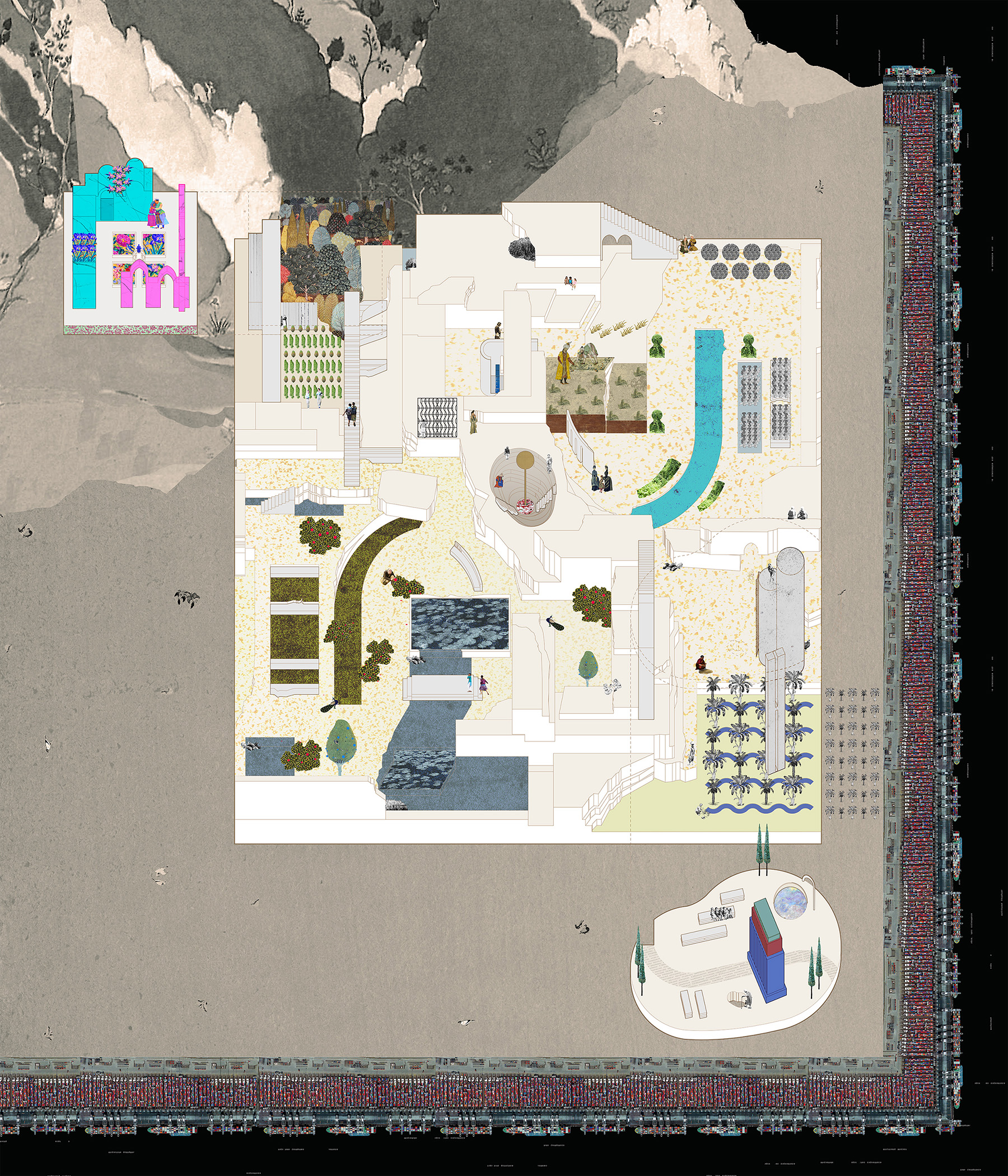

The program of Mendel’s Garden was derived by combining the four conceptions of nature and imagining their architectural outcomes, using the logic of a Punnett square. For instance, the synthesis of first and third nature, in which wilderness meets the manicured garden, might be a topiary of weeds. A combination of first and fourth nature could result in a laboratory for reverse-engineering prehistoric seeds. The merging of second and fourth nature might lead to a memorial park for expired patents.
The following drawings, borrowing from the style of Mughal and Persian miniature traditions, depict hypothetical scenes in each of these spaces.
The following drawings, borrowing from the style of Mughal and Persian miniature traditions, depict hypothetical scenes in each of these spaces.
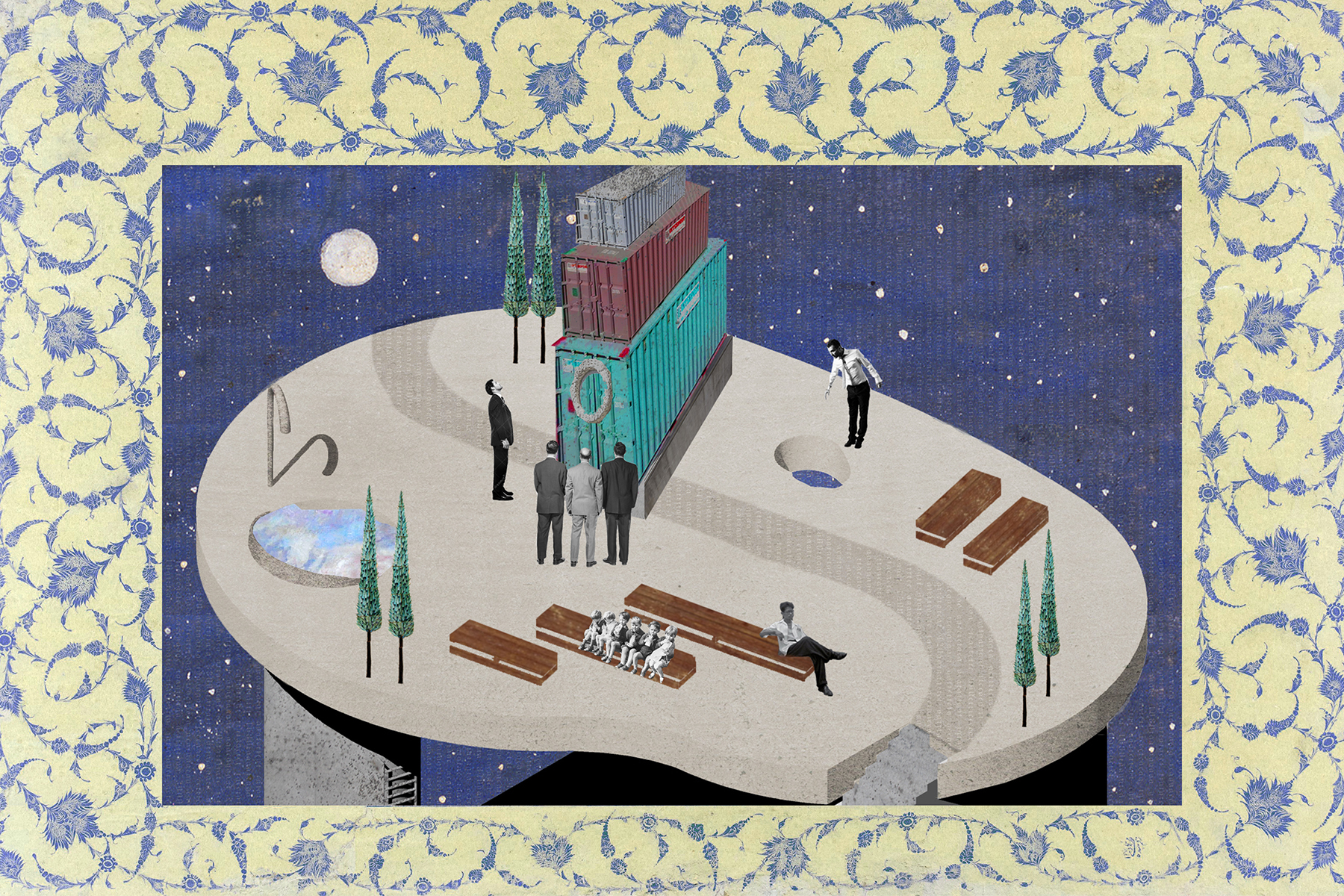
Corporate Field Trip to the Seed Cenotaph

Lovers Reunite in the Garden of Synthetic Pleasure
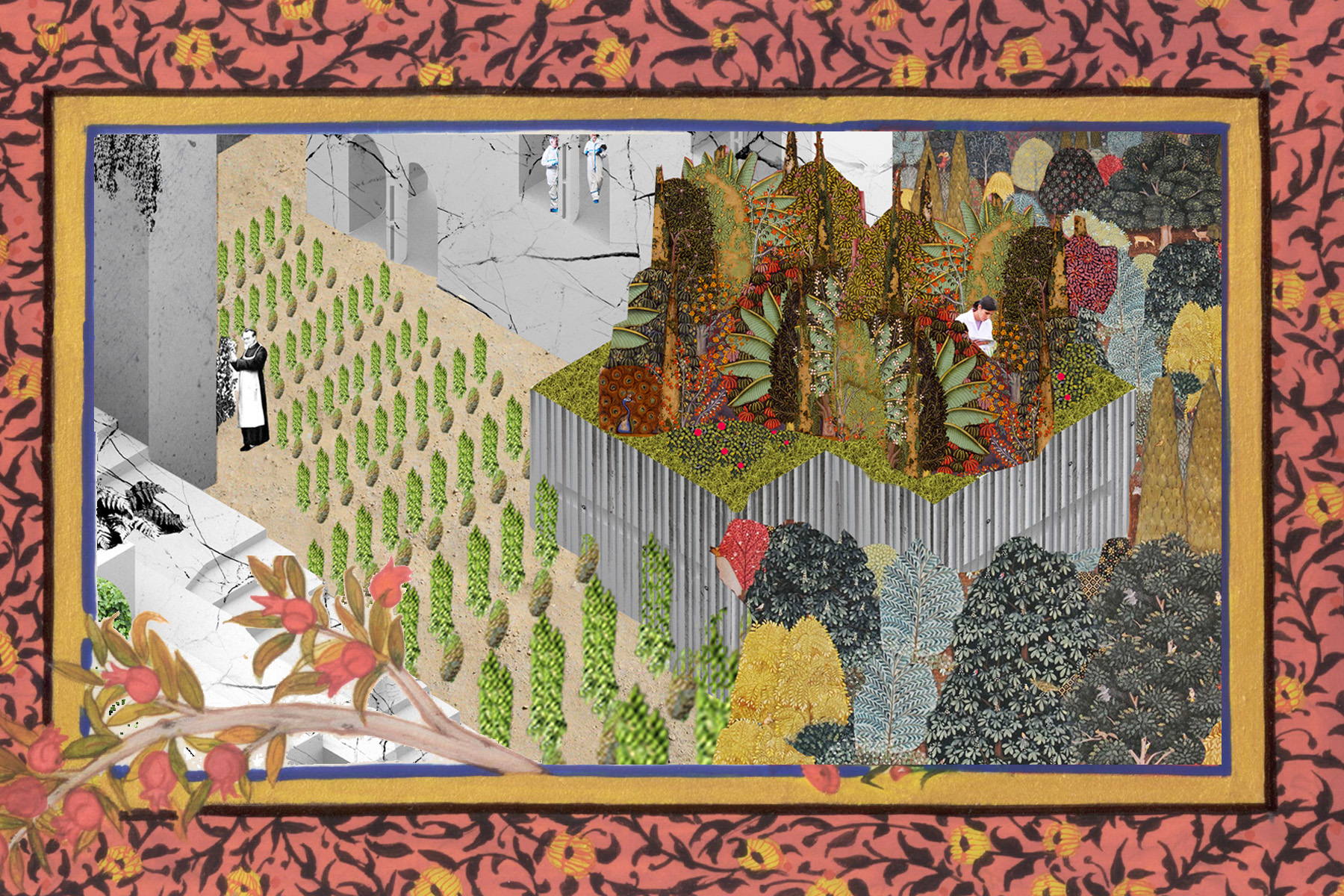
Botanists Engineer a Jurassic Fern
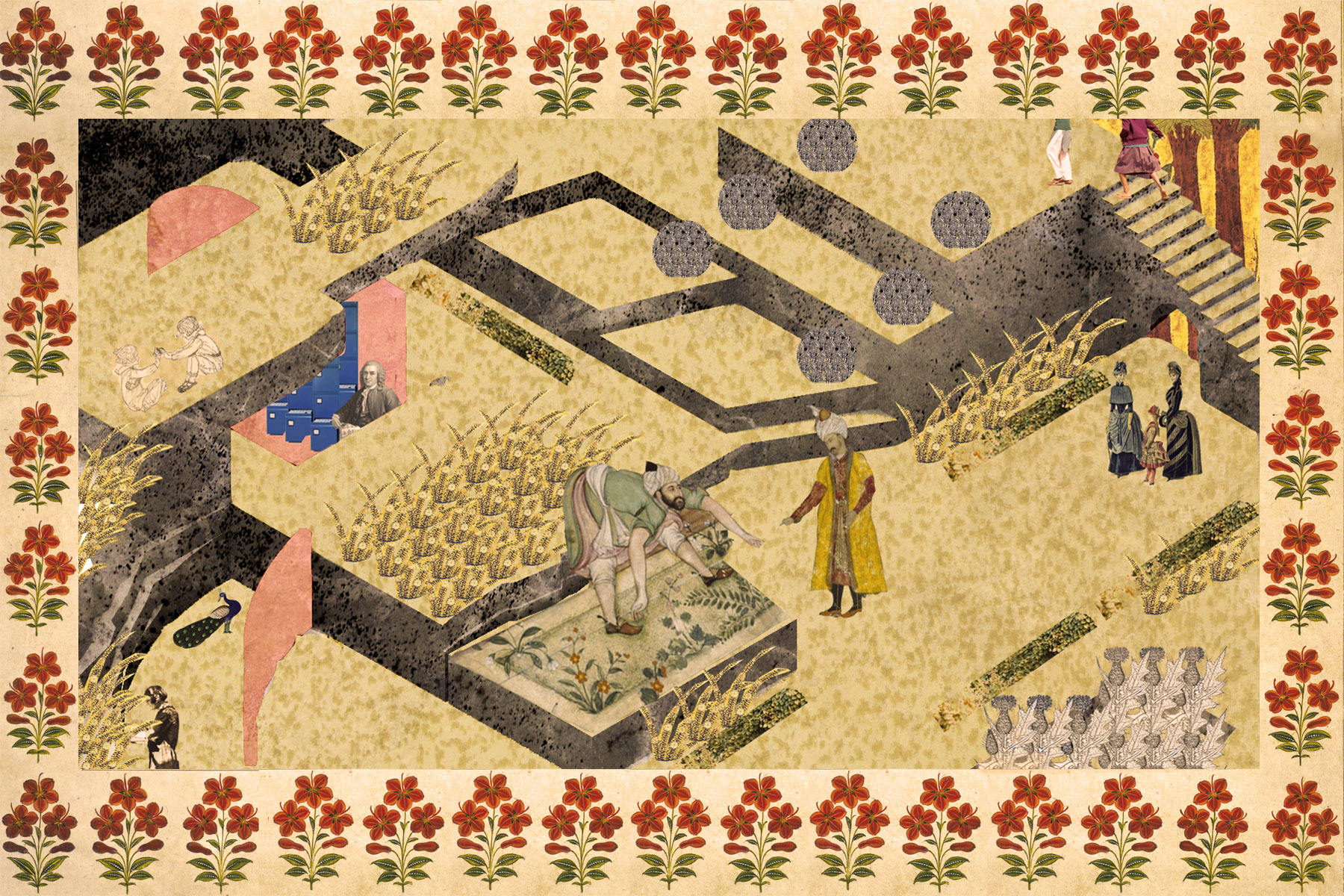
Emperor Inspects the Topiary of Weeds
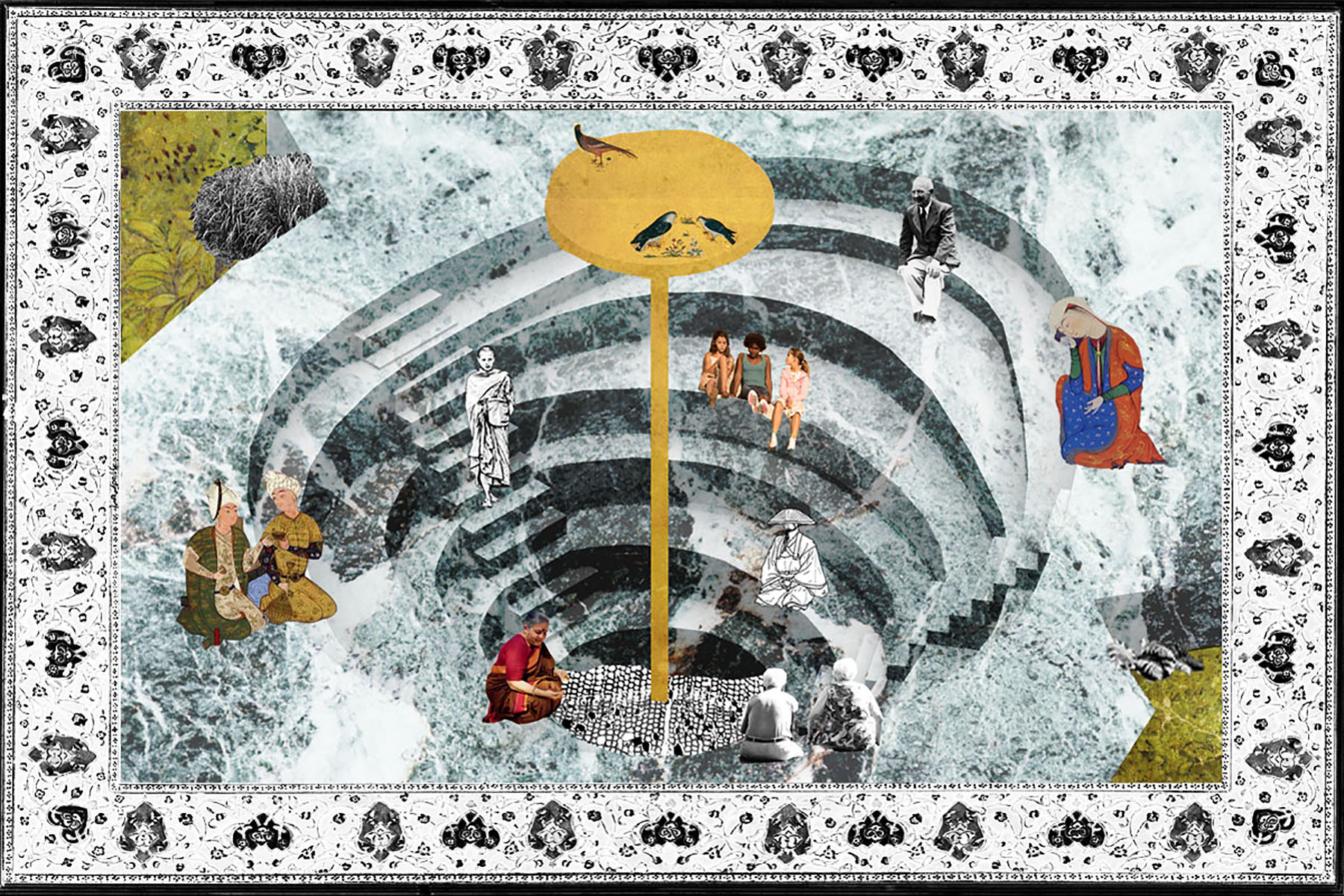
Annual Gathering at the Seed Shrine